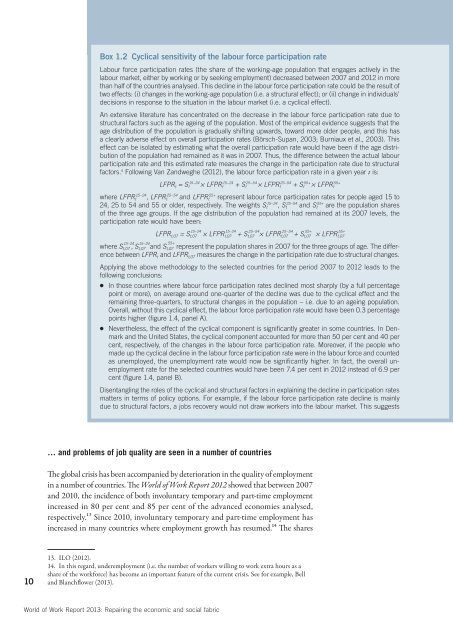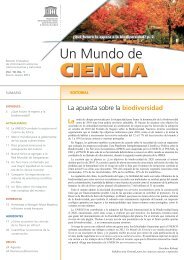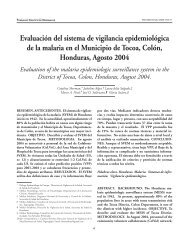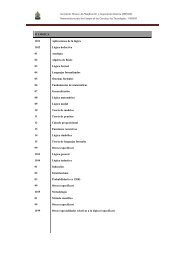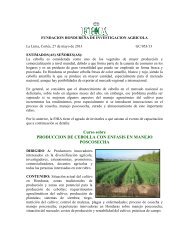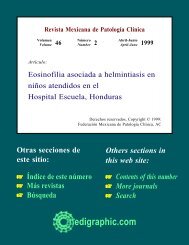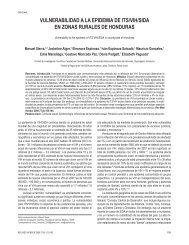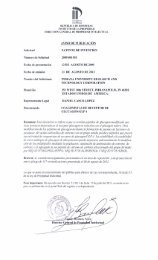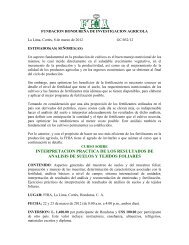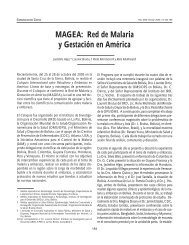World of Work Report 2013 - International Labour Organization
World of Work Report 2013 - International Labour Organization
World of Work Report 2013 - International Labour Organization
Create successful ePaper yourself
Turn your PDF publications into a flip-book with our unique Google optimized e-Paper software.
Box 1.2 Cyclical sensitivity <strong>of</strong> the labour force participation rate<br />
<strong>Labour</strong> force participation rates (the share <strong>of</strong> the working-age population that engages actively in the<br />
labour market, either by working or by seeking employment) decreased between 2007 and 2012 in more<br />
than half <strong>of</strong> the countries analysed. This decline in the labour force participation rate could be the result <strong>of</strong><br />
two effects: (i) changes in the working-age population (i.e. a structural effect); or (ii) change in individuals’<br />
decisions in response to the situation in the labour market (i.e. a cyclical effect).<br />
An extensive literature has concentrated on the decrease in the labour force participation rate due to<br />
structural factors such as the ageing <strong>of</strong> the population. Most <strong>of</strong> the empirical evidence suggests that the<br />
age distribution <strong>of</strong> the population is gradually shifting upwards, toward more older people, and this has<br />
a clearly adverse effect on overall participation rates (Börsch-Supan, 2003; Burniaux et al., 2003). This<br />
effect can be isolated by estimating what the overall participation rate would have been if the age distribution<br />
<strong>of</strong> the population had remained as it was in 2007. Thus, the difference between the actual labour<br />
participation rate and this estimated rate measures the change in the participation rate due to structural<br />
factors. a Following Van Zandweghe (2012), the labour force participation rate in a given year t is:<br />
LFPR t = S t<br />
15–24<br />
× LFPR t<br />
15–24<br />
+ S t<br />
25–54<br />
× LFPR t<br />
25–54<br />
+ S t<br />
55+<br />
× LFPR t<br />
55+<br />
where LFPR t<br />
15–24<br />
, LFPR t<br />
25–54<br />
and LFPR t<br />
55+<br />
represent labour force participation rates for people aged 15 to<br />
24, 25 to 54 and 55 or older, respectively. The weights S t<br />
15–24<br />
, S t<br />
25–54<br />
and S t<br />
55+<br />
are the population shares<br />
<strong>of</strong> the three age groups. If the age distribution <strong>of</strong> the population had remained at its 2007 levels, the<br />
participation rate would have been:<br />
15–24 15–24 25–54 25–54 55+ 55+<br />
LFPR t,07 = S t,07 × LFPR t,07 + S t,07 × LFPR t,07 + S t,07 × LFPR t,07<br />
15–24 15–24 55+<br />
where S t,07 , S t,07 and S t,07 represent the population shares in 2007 for the three groups <strong>of</strong> age. The difference<br />
between LFPR t and LFPR t,07 measures the change in the participation rate due to structural changes.<br />
Applying the above methodology to the selected countries for the period 2007 to 2012 leads to the<br />
following conclusions:<br />
● In those countries where labour force participation rates declined most sharply (by a full percentage<br />
point or more), on average around one-quarter <strong>of</strong> the decline was due to the cyclical effect and the<br />
remaining three-quarters, to structural changes in the population–i.e. due to an ageing population.<br />
Overall, without this cyclical effect, the labour force participation rate would have been 0.3percentage<br />
points higher (figure1.4, panelA).<br />
● Nevertheless, the effect <strong>of</strong> the cyclical component is significantly greater in some countries. In Denmark<br />
and the United States, the cyclical component accounted for more than 50per cent and 40per<br />
cent, respectively, <strong>of</strong> the changes in the labour force participation rate. Moreover, if the people who<br />
made up the cyclical decline in the labour force participation rate were in the labour force and counted<br />
as unemployed, the unemployment rate would now be significantly higher. In fact, the overall unemployment<br />
rate for the selected countries would have been 7.4per cent in 2012 instead <strong>of</strong> 6.9per<br />
cent (figure1.4, panelB).<br />
Disentangling the roles <strong>of</strong> the cyclical and structural factors in explaining the decline in participation rates<br />
matters in terms <strong>of</strong> policy options. For example, if the labour force participation rate decline is mainly<br />
due to structural factors, a jobs recovery would not draw workers into the labour market. This suggests<br />
… and problems <strong>of</strong> job quality are seen in a number <strong>of</strong> countries<br />
The global crisis has been accompanied by deterioration in the quality <strong>of</strong> employment<br />
in a number <strong>of</strong> countries. The <strong>World</strong> <strong>of</strong> <strong>Work</strong> <strong>Report</strong> 2012 showed that between 2007<br />
and 2010, the incidence <strong>of</strong> both involuntary temporary and part-time employment<br />
increased in 80 per cent and 85 per cent <strong>of</strong> the advanced economies analysed,<br />
respectively.13 Since 2010, involuntary temporary and part-time employment has<br />
increased in many countries where employment growth has resumed.14 The shares<br />
10<br />
13. ILO (2012).<br />
14. In this regard, underemployment (i.e. the number <strong>of</strong> workers willing to work extra hours as a<br />
share <strong>of</strong> the workforce) has become an important feature <strong>of</strong> the current crisis. See for example, Bell<br />
and Blanchflower (<strong>2013</strong>).<br />
<strong>World</strong> <strong>of</strong> <strong>Work</strong> <strong>Report</strong> <strong>2013</strong>: Repairing the economic and social fabric


